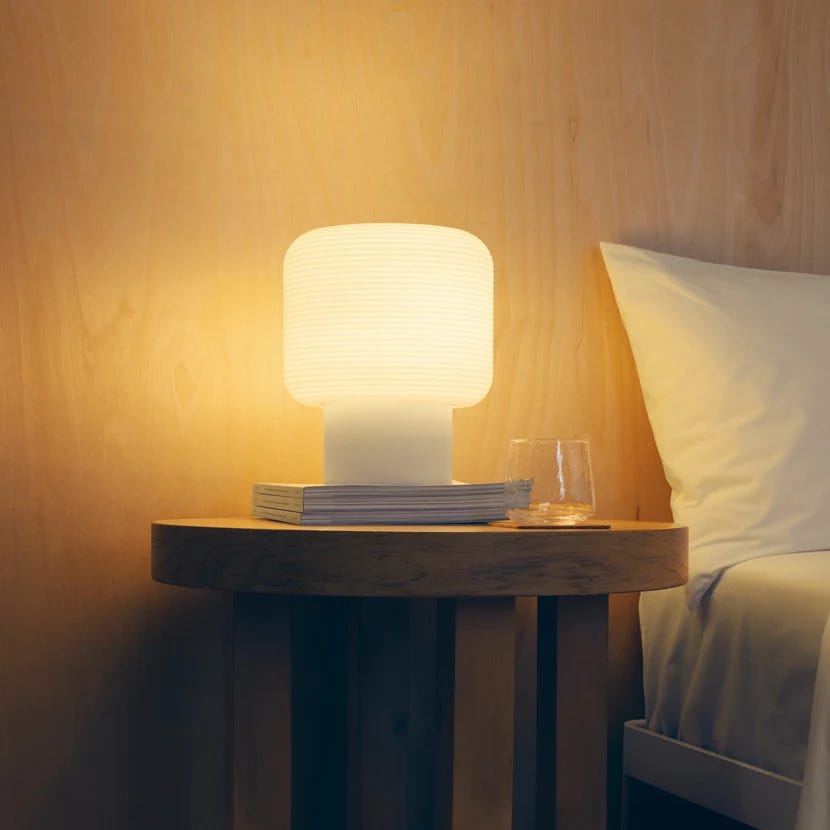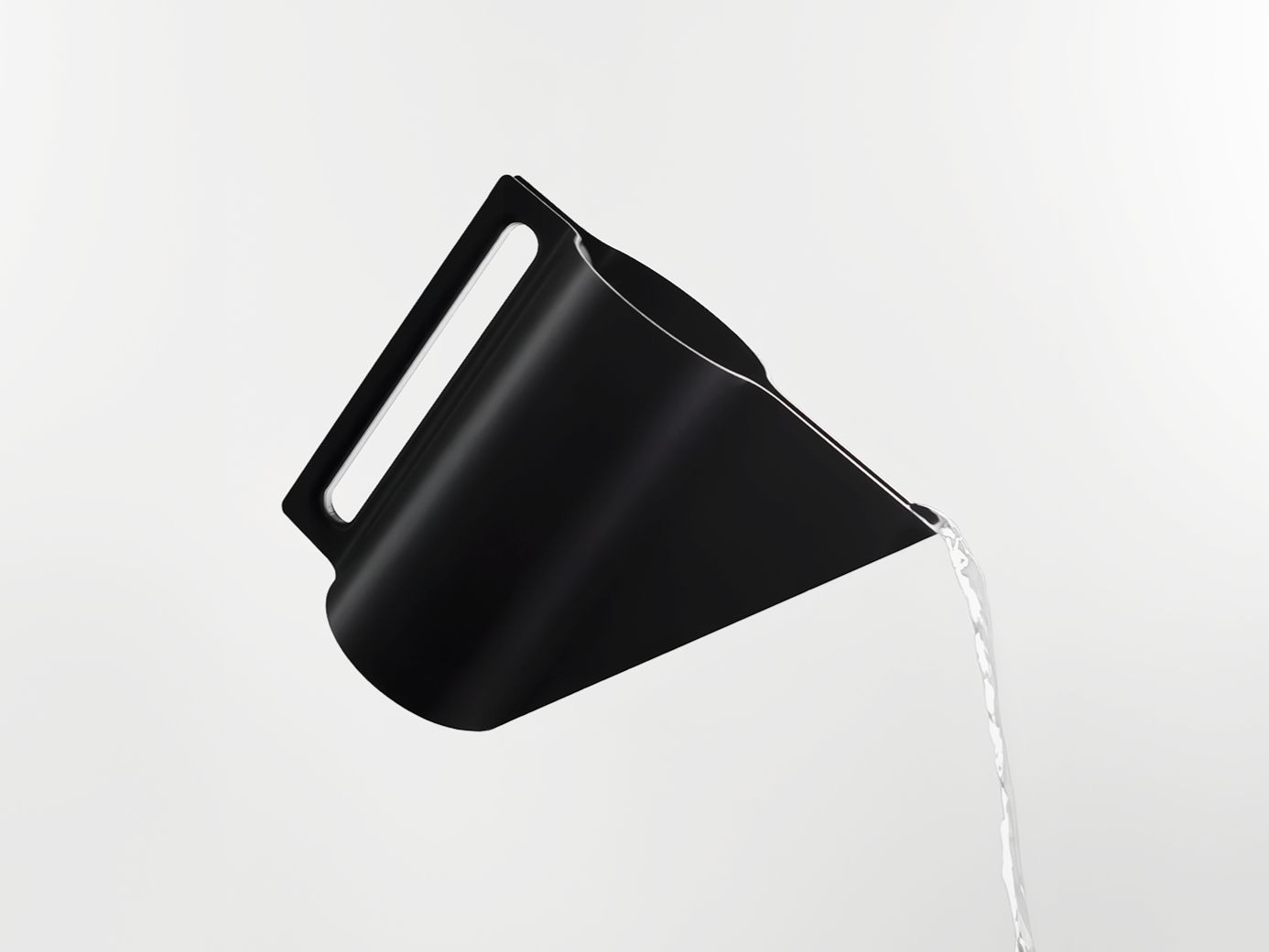Is 3D printing crossing The Chasm?
An opportunity for designers to craft goods for distributed production.
When 3D printing was just becoming more accessible to consumers about a decade ago, there were news stories that predicted that some day soon we’d have little factory robots in our homes and instead of going to the store to buy something we needed (or ordering it online), we’d just print it at home.
3D printers were predicted to be as common as inkjet or laser printers. You would be able to produce goods at home and both retailers and the environment would be spared the high cost of transporting and storing stuff waiting to be purchased.
Standing in front of a MakerBot Replicator in 2014 that was spitting PLA spaghetti and failing to print anything, I found this absolutely ludicrous.
It seemed to me that people unfamiliar with actual consumer-grade 3D printing technology were just talking out of their behinds. I was using it almost every day in my work as a designer, and I thought there was no way this unreliable and finicky fabrication technology would become commonplace in any reasonable amount of time.
Fast forward to now in late 2023, I think I may be finally changing my tune.
The Chasm
In the Technology Adoption Curve, a framework for explaining the spread of technological innovation popularized by Geoffrey A. Moore in his 1991 book "Crossing the Chasm”, there are 5 stages of adopting a technology as shown in the graphic below.
In the Early Adopters phase, there is a critical step called “The Chasm” where new technologies are tested and have the chance to continue along the curve towards majority adoption.
This is where a new technology has to prove its use and applicability beyond novelty and innovation for its own sake so that people in the Early Majority start to pick it up.
Many new technologies die here or linger here for a very long time. I would argue that VR has been attempting to cross The Chasm for at least the last decade, if not longer (the first VR headset was invented in 1968).
I think touch screen smartphones really crossed The Chasm with the introduction of the iPhone in 2007.
Despite home consumer grade 3D printing becoming fairly accessible over the last decade (you can buy a fairly capable FDM printer for <$200), I think it is still trying to cross The Chasm, both as a technology for producing consumer goods and the perception of those goods as being “real” products.
But I think it is showing signs of being ready to make the leap.
3D printing as a means of on-demand production
While 3D printing has been around for awhile now, and it has been possible to produce very high quality 3D printed parts using professional-grade equipment for a lot of that time, for most mass production applications the price to quality ratio was never quite right.
High quality 3D printing made sense for producing high fidelity prototypes for product development, or bespoke high-precision parts for medical or dental applications. The market for these products could bear the cost of production, which tended to be high due to the very advanced machines and high-tech expertise required to create them.
3D printing mostly did not make sense for lower priced consumer goods, because the per-part cost to produce them at a level of quality comparable to a high-volume manufacturing technique like injection molding was astronomical.
Even using lower-end machines to produce such parts for consumer applications didn’t make sense because the quality of the results was nowhere near acceptable to a modern consumer and it still cost much more than parts produced by traditional tooling.
There was also the time aspect. 3D printing even just simple parts was just not fast enough, especially on consumer or even prosumer grade machines.
Over the past few years, the pace of development in 3D printing technology, especially in more consumer accessible machines, has really ramped up.
You can now buy machines like the Bambu X1 that print at blinding speeds and at a quality that starts to get closer to a mass-produced plastic part. It also has tons of quality-of-life features that make the experience of using it so much less frustrating that older machines like that MakerBot I started on.
While the Bambu is still expensive at roughly $1,600, that is less than the price of a new MacBook Pro and far, far less than the price of a professional-grade Stratasys or Carbon machine.
Even a modern workhorse hobby printer like the Creality Ender 3 can produce fairly respectable results, and gets better and better with tuning and upgrades.
While I think we are a long way from 3D printing replacing traditional manufacturing techniques (and honestly the jury’s still out on whether that’s even possible), I think we are closer than we’ve ever been.
The price of producing high-quality 3D printed parts has come down enough where it has become a viable means of production. The user experience of interfacing with the equipment has also improved enough that its becoming more accessible to a wider audience.
3D printed goods as real products
For most people who don’t 3D print, and I would argue even for people who do 3D print but are not designers, 3D printing is mostly a niche hobby that produces nifty novelty items that are kind of cool but in a category of their own, separate from stuff that you buy at the store.
The other major category seems to be pragmatic solutions to very specific problems that don’t warrant a mass produced product. A very meta joke I saw on the internet somewhere pointed out that the main purpose of having a 3D printer was to produce parts for your 3D printer.
While there has been a fairly lively market for 3D printed goods on the internet for some time now, the perceived value of these tend to be low and 3D printing has been somewhat unfairly tarred with the stigma of being “cheap” and “disposable”.
In recent years I’ve started to see this change. Perhaps people are now familiar enough with 3D printing and the quality of consumer-grade 3D printing has improved enough to make them acceptable. Perhaps it’s just a matter of new brands and designers who don’t have a stigma against 3D printing leading the charge.
Gantri, a lighting company based in San Francisco, makes 3D printed designer lamps that are sold at designer prices. And it seems that they have a viable business as they continue to scale.
While they do apply post-processing techniques to their products to improve aesthetics, durability, and to take off some of the 3D printed edge off, they are very open about the fact that their lamps are in fact 3D printed and produced on-demand.
By leveraging 3D printing as a primary production technique, they can produce a huge variety of designs, which they collaborate with up-and-coming designers on, without having to proportionally scale their logistics.
Smaller scale designers have also started to experiment with their own 3D printed product businesses. Maisy Leigh, a YouTuber I follow (who actually also has a lamp design on Gantri), recently launched a line of MagSafe iPhone stands that are entirely 3D printed.
This was a very smart choice for a first product because it leverages Apple’s own MagSafe iPhone charger for the electronics and the 3D printed parts are relatively simple. Also, having built a sizeable audience on YouTube, Maisy had an inbuilt customer base to sell to, making it a fairly low-risk venture. I believe they sold out of their first batch in one day and continue to scale up production.
As new brands and creators continue to embrace 3D printing as a viable production technique for “real” products, I think we’re going to keep seeing the stigma around 3D printed goods erode, and in a few years it might not be anything out of the ordinary to be buying a 3D printed product.
Opportunities for designers
Last week on LinkedIn I came across a post by designer Jonathan Yim, who had created a design for a 3D printed watering can as a weekend hobby project. It was a nice, simple design and beautifully photographed. I actually didn’t know it was 3D printed until I read the caption.
As designers, I think we've been steeped in 3D printing longer than most people, and are uniquely positioned to take advantage of the trends I’ve mentioned above. We understand the nuances of the technology and know how best to design for them.
I think as 3D printing continues to become better, cheaper, easier to scale, and less stigmatized as production technique, designers have opportunities to create 3D printed designer goods that can perhaps turn into real product businesses.
While the production side has become much easier, most people still do not have the expertise required to create their own designs. As more people start to experiment with 3D printing at home, perhaps there will even be an opportunity for designers to sell their designs as digital products, opening up a whole new sector of the digital economy to designers of physical goods.
Perhaps us designers will be the ones to help 3D printing finally cross The Chasm.
3 ways I can help you
LinkedIn for Designers Course My 1-hour downloadable video course that will teach you how to use LinkedIn to grow your design career or business through creating engaging design content.
Book a 1-hour consulting session. Dedicated time to talk about your product, design strategy, business strategy, career or anything else you'd like. Use promo code STUDENT for 80% off if you are a student or young professional (<5 years career experience).
Sponsor this newsletter. Promote your product, service, or offer to 2,500+ designers that get Design Things in their inbox every week. Note: I only promote products that I have personally tested and would recommend.
What did you think of this email?
Your feedback helps me make this newsletter relevant and interesting to you.








